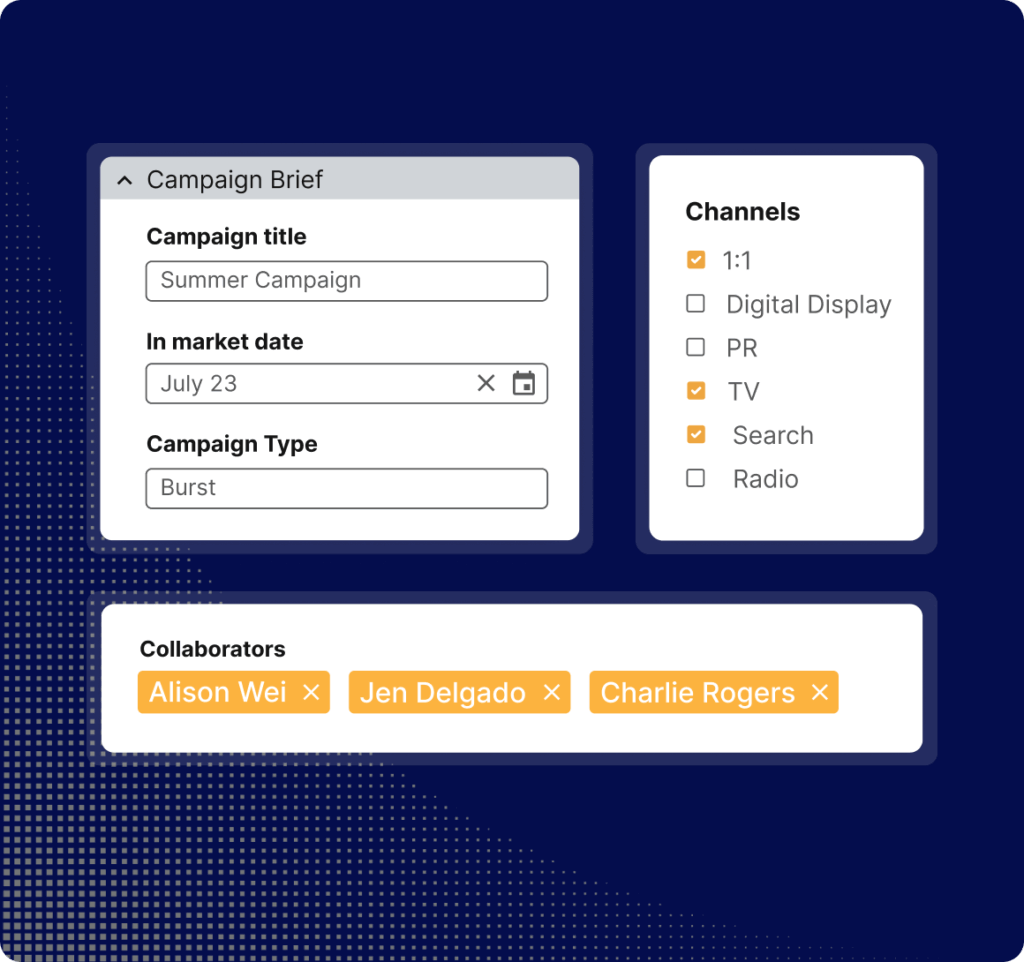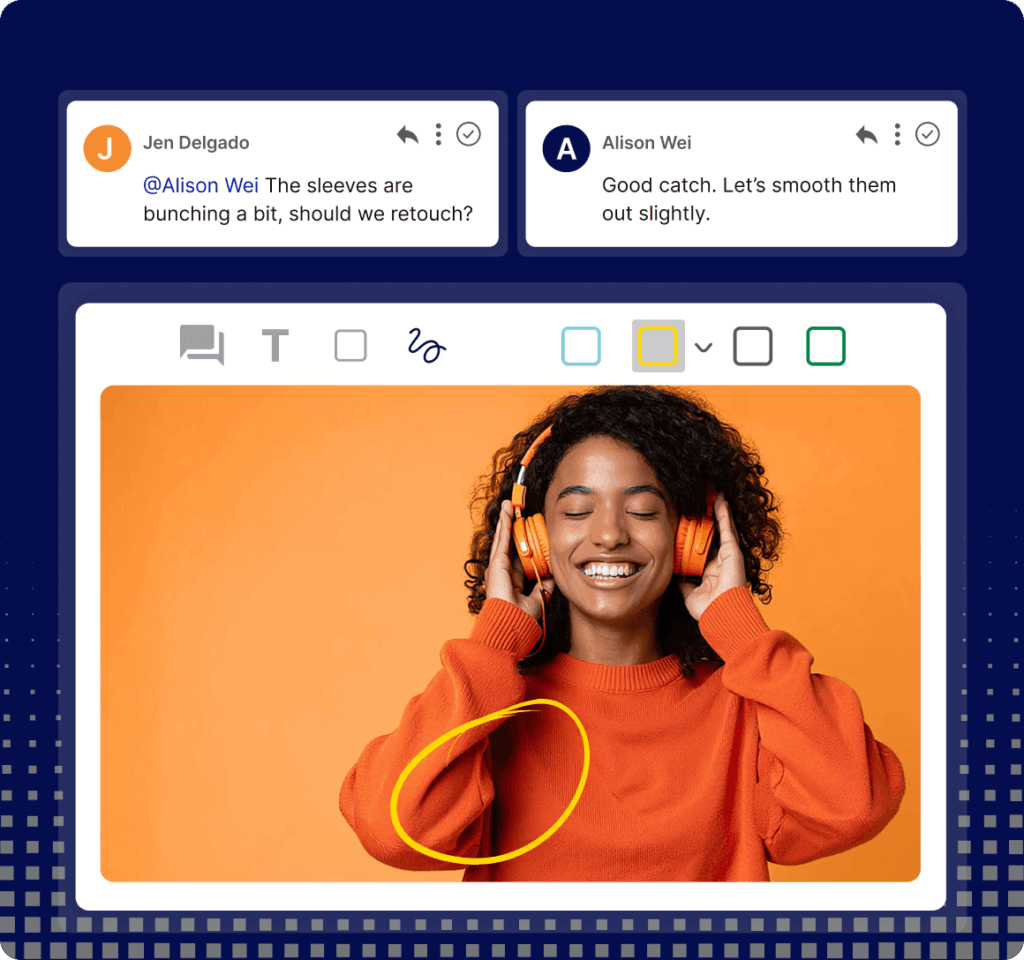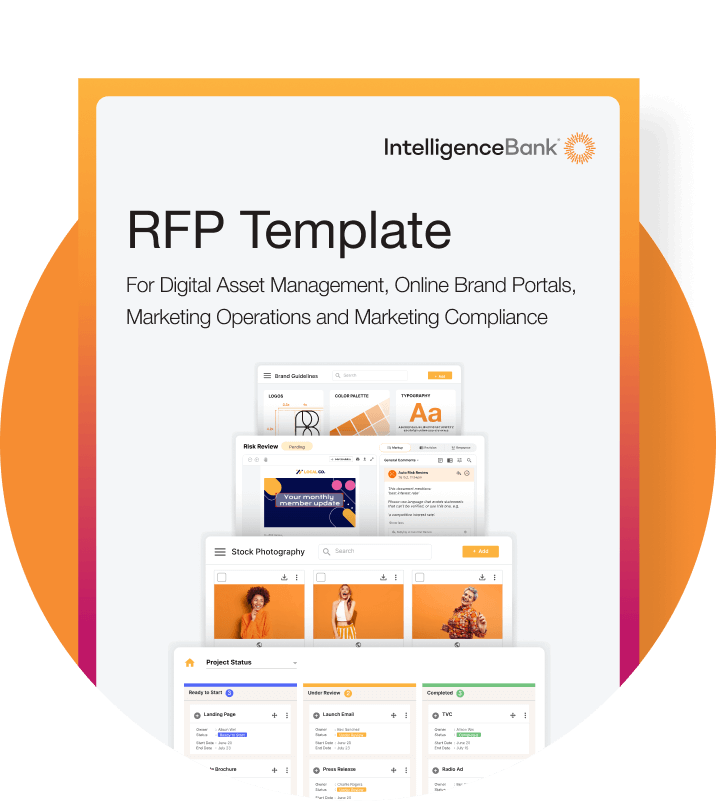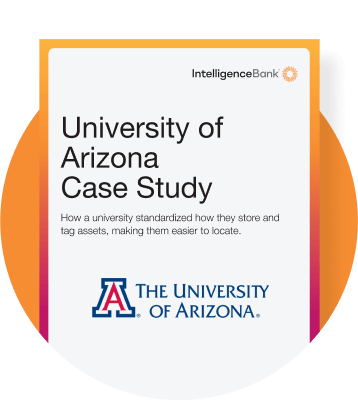A marketing workflow is a business process that ensures you follow best practice steps when creating campaigns, approving creative assets, getting budgets approved, or requesting brand assets. Essentially, it stops the chaos and creates a system to get work done faster and ensure it’s on brand and legally approved.
When creating a workflow within IntelligenceBank, you typically establish the steps that are needed to take in our form builder and attach users and approvals. For example, a typical creative brief workflow contains an interactive form with approvals to get to the next stage, with the ability to markup and annotate digital assets directly within the creative brief form.

Step 2 – Submit to get approved internally. If it gets rejected at this point, that’s not the end of the world, as you didn’t waste time or production fees.




Why your team needs marketing workflows
Marketing teams are running a mile a minute and have lots of proverbial balls in the air. Without pre-determined marketing workflows in place, it’s easy to miss important approval stages, brand and legal considerations – and yes, deadlines.
While sometimes it feels easier to just ‘do it in email or on a spreadsheet’ – at scale it’s a huge problem. A lack of systems and processes means quality, brand and legal compliance can fall down pretty quickly and marketing departments can easily run into a world of pain. Here is how marketing workflows can help.
Keep everyone aligned
Workflows help your team know their role in the process and what they need to do next. They can see the status of campaigns, creative briefs or tasks and also what’s been approved. Markup and proofing collaboration within the task ensures everyone who needs to can comment before files go to final approval.
Manage the backlog
Marketing is inundated with projects, ideas and tasks. Having a task register where ideas or things to do can be submitted in a task brief form, prioritized, assigned and visualized in a kanban board ensures your team is working on what’s important.
Hit deadlines
Most marketing projects are time boxed and teams need to ‘work backwards’ from media material due dates. A workflow process keeps everyone on track with due dates and automatic reminders.
Reduce marketing project risk
Every time you do something new there is marketing risk. There could be basic brand compliance issues, budget blow out or issues with incorrect disclaimers. A marketing workflow the all the checks and balances minimizes the chance of things going pear shaped.
Increases quality of creative
As the old saying goes, great briefs get great creative. By standardizing the creative briefing and approval process – your team are more likely to get better creative outcomes more frequently and you will minimize production wastage.
Get work done 7x faster
What are the Top 10 most popular marketing workflows?
Creative brief approval workflow
Task brief workflow
Marketing risk assessment workflow
Often tied to a creative brief to ensure the marketing team has checked off both legal and regulatory requirements, which differs by industry and by geography. For example, in banking, Regulation DD states that marketers must disclose certain information in their deposit advertising, including:
- Annual percentage yield
- Interest rates
- Minimum-balance requirements
- Account-opening disclosures
- Fee schedules
Marketing disclaimers workflow
Content and collateral tracking workflow
Data brief workflow
Marketing disclaimers workflow
Brand asset request workflow
Media buying authority workflow
When a marketing team is considering or executing a sponsorship, there are several moving parts. A sponsorship workflow brief contains the project, often involving several parts of the business, in a single project, with related tasks, due dates and a related folder for creative.




